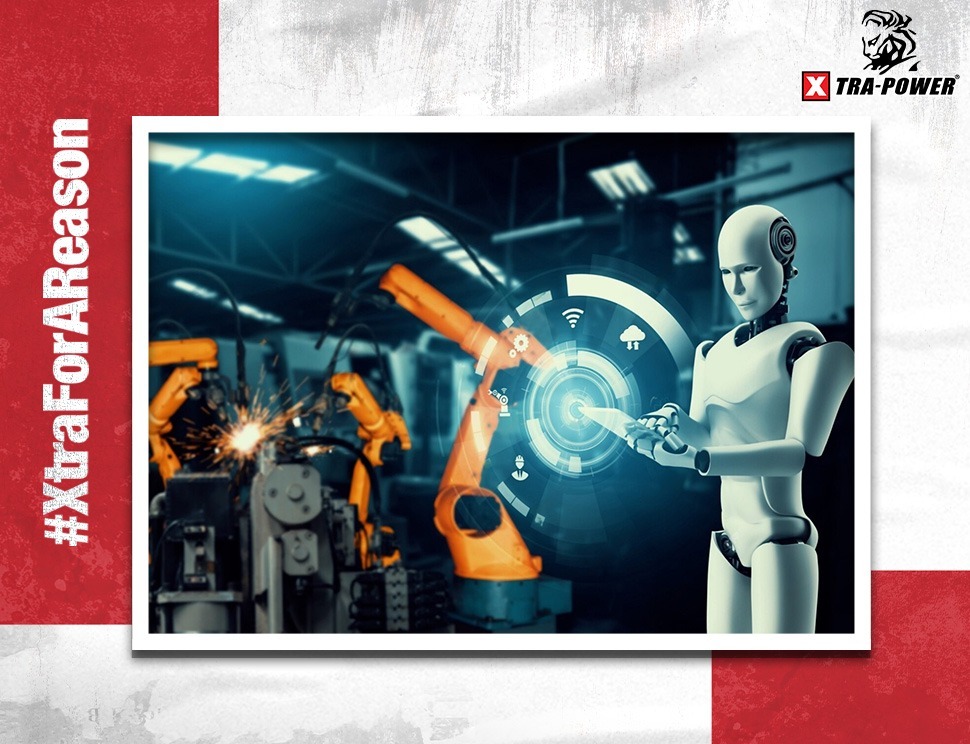The power tools industry is on the brink of a revolution, spearheaded by the integration of Artificial Intelligence (AI). We're not just seeing improvements; we're witnessing a transformation — a staggering 25% increase in fuel efficiency and significantly reduced maintenance downtime. This shift is not about incremental changes; it's about redefining how we approach the performance and upkeep of our tools.
AI is also refining how we interact with these tools, making them more intuitive. They're adapting to our work styles, automatically adjusting settings for peak performance and taking on routine tasks. This move from manual adjustments to intelligent automation is revolutionizing productivity. It ensures every tool is not just another product in the kit but a crucial, efficient part of our projects, enhancing outcomes and user satisfaction.
Let's now get into the tangible benefits AI brings to our toolboxes and how it's reshaping our work dynamics.
Enhancing Equipment Efficiency
Beyond just operational tweaks, AI is revolutionizing how we manage our heavy equipment. This technology doesn’t just remind us when a machine needs maintenance; it predicts when a machine will need intervention before a breakdown occurs. This predictive maintenance capability is all about enhancing operational efficiency and cutting costs proactively
Like a routine health check-up, AI serves as a comprehensive diagnostic tool for our equipment, continuously monitoring each component for optimal performance
Revolutionizing Power Tools with Autonomous AI
Taking things a step further, integrating autonomous technologies allow our tools to operate independently. This isn't just about cutting labor costs or improving efficiency; it's about transforming the construction site into a synchronized work field where every tool plays its part perfectly.
Furthermore, these advanced tools are designed to communicate and coordinate among themselves. This ensures that complex tasks like drilling or cutting on large-scale construction projects are carried out with unmatched accuracy. The result is a notable increase in productivity and a reduction in operational errors, enhancing efficiency.
Bringing Safety to the Forefront
Today's power tools are not just built with quality; they're intelligently designed to enhance safety. With innovative features like smart alertness detection, these tools can detect when we're too fatigued to operate safely, giving us timely warnings before exhaustion leads to errors. And the innovation doesn't end there. AI-powered hazard prevention actively scans our surroundings and adapts in real-time to prevent accidents. It's akin to having an extra set of vigilant eyes and ears, ensuring our workspace remains as safe as possible. These advancements are not just elevating tool performance; they're revolutionizing how we uphold safety standards on the job.
Leveraging Predictive Maintenance for Optimizing Tool Performance
Predictive maintenance is redefining efficiency and reliability. Equipped with AI-driven monitoring systems, manufacturers are moving beyond reacting to breakdowns to preventing them. This proactive approach utilizes analytics to foresee equipment failures, enabling strategically timed maintenance. The outcome? Dramatically reduced downtime and extended tool lifespans, ensuring optimal performance when it matters most.
At the core of this technology are sensors embedded within the tools, continuously collecting data on critical parameters such as temperature, vibration, and usage patterns. This vigilant monitoring allows manufacturers to fine-tune maintenance schedules with precision, circumventing unexpected malfunctions.
Challenges and Considerations
Of course, with great power comes great responsibility. As AI integrates into power tool management, it introduces not only enhancements but also challenges that require careful navigation. Key among these are ensuring data security and providing effective training. As power tools become embedded with sensitive operational data and connect to AI systems, they become potential targets for cyber threats. Implementing encryption for data storage and transmission is crucial, as is establishing strict access controls to ensure only authorized personnel manage AI interfaces. Additionally, regular security audits are vital to proactively identify and mitigate vulnerabilities.
The shift towards AI in power tools marks a significant leap toward enhanced operational efficiency. With advanced algorithms, these tools operate with increased power and substantially reduce downtime and costs. However, this technological advancement demands a commitment to meticulous implementation and training to ensure safe, efficient, and productive use amidst the evolving landscape of the power tools industry.
AI enhances tool performance, automates operations, and boosts safety. Yet, the journey comes with challenges, particularly in data security and training. By confronting these issues and responsibly leveraging AI's potential, we're not just adapting—we're setting new standards for a smarter, safer, and more efficient industry.













